The magic of a white Christmas in 1962 soon gave way to the perils of plummeting temperatures as the so-called Big Freeze of 1963 cut off north communities for weeks on end.
Dubbed ‘the winter to end all winters’, it was Aberdeen’s coldest and most memorable winter since 1895 as the whole nation was choked by Jack Frost’s icy grasp.
While Aberdonians had breaks in the adverse weather, you didn’t need to venture far into the Shire to find rural residents stranded by snowdrifts several feet high.
And those living in the Highlands could have been forgiven for thinking they were trapped in the perpetual winter of Narnia as temperatures barely crept above zero.
Lit fires under lorries to defrost diesel
The coldest day of the winter until that point brought Grantown-on-Spey to a complete standstill on January 8.
Temperatures in the town were recorded as plummeting to “38 degrees below frost” – the modern equivalent being a chilling -21.1 Celsius (-6F).
Transport was a no-go as trains froze, along with the diesel in buses and lorries.
Residents couldn’t even enjoy a warming cup of tea, as milk bottles froze solid.
The cream erupted, freezing inches above the bottletops, and in some cases when the bottles were picked up, the glass bottoms remained stuck to doorsteps.
Intrepid lorry drivers heading north got as far as Newtonmore and Kingussie before the frost bit.
Their heavy vehicles came to a shuddering standstill on the A9; some drivers even lit fires under their lorries in a bid to defrost the diesel.
Others at Dalwhinnie just abandoned their vehicles – much to the headache of the Inverness RAC who had to rescue several stranded juggernauts.
Inverness left in the dark
Conditions weren’t much more favourable in Inverness.
The burgh’s lighting department ‘lost the battle of the lamps’ for weeks, as 375 of the city’s gas street lights failed to ignite in the cold.
Lighting inspector Donald Munro lamented: “We’ve been fighting a losing battle to try and keep these lamps going for the past week.”
Condensation freezing in the underground pipes meant gas couldn’t get through, and attempts to clear them with meths failed.
Further north, there were concerns for livestock out on remote hills and glens.
It was the RAF to the rescue for 600 snowbound sheep near Dornoch, as a helicopter was dispatched from Leuchars to drop two tonnes of hay.
Aberdeen schoolboy in horror sledging accident
As well as disrupting services, the snow brought mishaps and accidents.
The roof of the Main Street garage in Rhynie, near Huntly, spectacularly collapsed under the weight of 18 inches of snow.
Cars and a motorcycle were crushed as the metal roof crumpled and in turn caused the cement-block frontage of the garage to split and buckle.
The plate-glass windows were left ‘bulging grotesquely’.
It was particularly bad timing for local man John Duncan who was urgently needing his car to visit his wife and their newborn son at Aberdeen Maternity Hospital.
Aberdeen Royal Infirmary meanwhile was kept busy with injuries.
City schoolboy Philip Johnston, 8, from Kettlehills Crescent, was seriously injured in a horror sledging accident in Northfield.
The youngster sped down a slope into the path of an oncoming car leaving him with two broken legs and a broken collarbone.
His helpless pal could only look on in despair as the traumatic incident unfolded.
And another little boy, six-year-old David Fraser faced similar misfortune in New Pitsligo that same weekend.
He was sledging with friends in Alexander Bell Place when he slid across the junction at High Street in front of the Banff-Fraserburgh bus.
The young lad clipped the rear wheel before being thrown underneath the vehicle, but was lucky to escape with only a leg injury.
Engineers stranded at Mormond Hill
Buchan took a real beating during the cold snap.
Elsewhere in the district, a helicopter carried out a relief mission for engineers stranded at the American ballistic missile early warning station on Mormond Hill.
After the access road was blocked by 10ft drifts, two engineers abandoned their car and scaled the 749ft hill on foot to relieve their colleagues at the top, but deteriorating conditions saw all four stuck.
The helicopter took a three-man crew and supplies to those stranded on the storm-swept summit, and ferried RAF airmen to the adjoining NATO communications centre.
But the inclement weather was perfect for the men and officers of the 1st Battalion The Argyll and Sutherland Highlanders who arrived at Ballater Station for a two-week course in winter warfare.
Players and fans pitched in at Inverurie
But the snow wasn’t favourable when it came to sporting fixtures, which famously bore the brunt of disruption.
From the top division down, clubs were at the mercy of the weather, despite best efforts to clear pitches.
When Inverurie Locos’ tie against Cumnock was postponed for the third time, players and fans alike took matters into their own hands to clear a foot of snow from the pitch.
Locos’ left-back Alex Watson even borrowed his father-in-law’s plough to push through the thick snow and ice.
But the efforts were in vain. Hopes were raised then dashed after a slight thaw was followed by another deep freeze – and the Locos’ clash was called off for a fourth time.
Inverness Caledonian on the other hand were probably wishing their cup-tie had been snowed off after a drubbing at the hands of Dundee.
The Highland outfit’s Telford Street pitch passed its inspection, but unfortunately for the home side, “Dundee produced a sparkling brand of football to beat Caledonian 5-1”.
But at least the players could enjoy a hot bath after the game – Caley’s right-back Robert Glennie, a plumber by day, de-iced the Telford Street Park pipes with his blowtorch beforehand.
Skid pan roads and ice-box conditions
Just when it felt like the perishing conditions couldn’t get any worse, the mercury slid even further down the scale on January 18.
In Grantown, January 18 was described as a “blood-chilling” -22C, with temperatures in Inverness peaking at -13C, Huntly at -14C, Strathdon at -20C and Aberdeen at -5.5C.
In Braemar, a new temperature record was set for 1963, as it hit a low of -22.2C.
The Highlands endured the worst of conditions, Grey Mare’s Waterfall – a Kinlochleven beauty spot – was frozen solid for a fortnight for the first time since 1947.
Diesel was described as looking like jelly, and for motorists who could get their engines going, there were “skid-pan roads” during another day of “ice-box conditions”.
Another mercy mission for Highland sheep took a dramatic turn when blizzards forced the helicopter to make an unscheduled landing en route back to RAF Leuchars.
Hundreds of hungry ewes at a farm near Oykel Bridge in Sutherland had their dinner dropped off by helicopter.
But on the way home, the hay-drop helicopter – on a nine-hour round trip to Sutherland, Ross and Cromarty – had to take refuge in a field near Laurencekirk.
Doctors walked for miles
A ‘creeping thaw’ set in towards the end of January, but it was short lived.
Any hopes the weather would improve in February were dashed.
Treacherous conditions and “shrieking winds” caused roads chaos as snow drifted.
For days, Tomintoul and the Cabrach were completely cut off as neither newspaper, post or grocery delivery vans could breach the snow.
Oldmeldrum was “cut off on all sides”, while a bus trying to make the 35-minute journey between Macduff and Fraserburgh ended up stuck in drifts for 10 hours.
It took a Turriff doctor 2.5 hours to travel eight miles down the road to treat seven-year-old Peter Wilson for suspected appendicitis in Rothienorman.
And that was just one of many medical emergencies hampered by the snow.
Little Mary Wisener, six, from Fyvie needed urgent medical attention but the family’s isolated cottage was snowed in.
Abandoning his car, Dr Taylor walked the remaining two miles to the girl.
Wrapped in blankets, she was driven in a box on the back of a tractor until the vehicle could travel no further, then her father and the driver took it in turns to carry her to a waiting car.
In Strathdon, a man took ill and he had to be dragged on a sledge by police for over a mile to meet an ambulance on the main road.
‘I have never seen anything like it in my life’
Dozens of vehicles piled up in the town squares in Huntly and Keith as police halted any motorists attempting the journey north.
Those travelling by train didn’t have much luck either, as the Inverness-Aviemore train got stranded at Dava in Moray.
For 11 hours, the passengers, including a baby, awaited the arrival of a rescue train to end their ordeal 15 miles south of Forres.
Snowploughs failed to reach the train, but a railman on foot bearing sandwiches and tea found the passengers “cheerful” upon his arrival.
Forres councillor John Falconer described the snow scene at Dava Station as “just like Alaska – I have never seen anything like it in my life”.
In the end, the frozen drifts had to be dynamited.
On the Tarnish road between Keith and Elgin, more than 100 vehicles were extricated from drifts.
There were similar scenes between Fyvie, Meldrum and Inverurie where drivers abandoned their vehicles at Barra Castle and walked a few miles to either town.
Commercial travellers Hector Stevenson and Bill Reid were among those who trudged through waist-deep snow for two miles to Oldmeldrum
It wasn’t just people needing rescued, the AA dragged a sledge of fodder to nine stricken bulls who had been trapped on a truck in snowdrifts near Dalwhinnie for two days.
The truck’s driver George Fraser said he hit the drifts about 2am on Wednesday and waited until daybreak to wade a mile through the snow for help.
He added: “I have never seen drifts so high. They were about 15-16ft high where my lorry was.”
Thaw brought flooding
It wasn’t until March when there was finally respite and the thaw began.
March 6 was the first morning of that year where there wasn’t frost anywhere in Britain.
But melting ice saw torrents tear through communities.
Rapidly melting snow on fields surrounding Brechin saw water cascade through the town.
Water six inches deep rushed down Cookston Road and burst through manholes near the fire station, marooning it on its own island.
Near Ballater, the River Gairn burst its banks, gouging a new course through a field, lifting an acre-and-a-half of turnips in the process.
The Don was in spate at Kintore cutting off the road to Fintray, while the Ury comprehensively spilled over into fields at Pitcaple and Inverurie.
But despite the havoc, the flooding was a welcome sign that winter had finally loosened its grip on the north of Scotland.
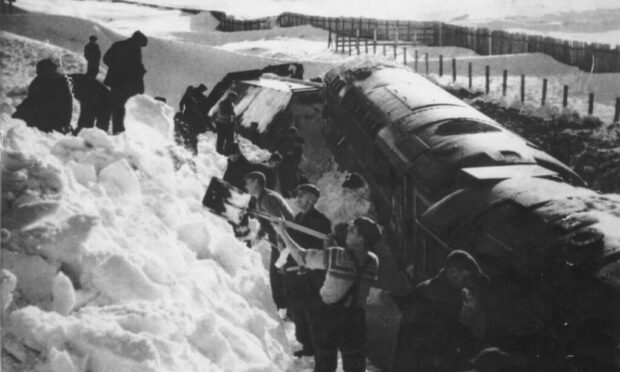
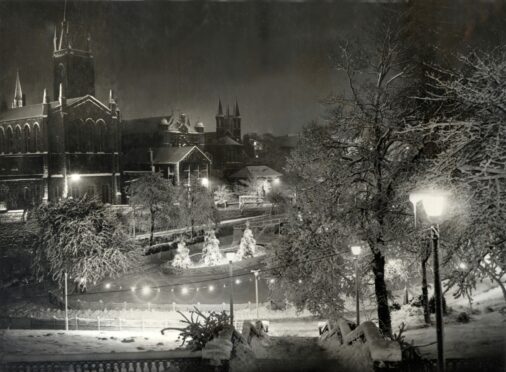
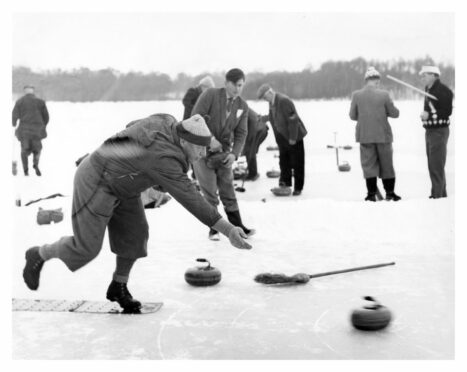
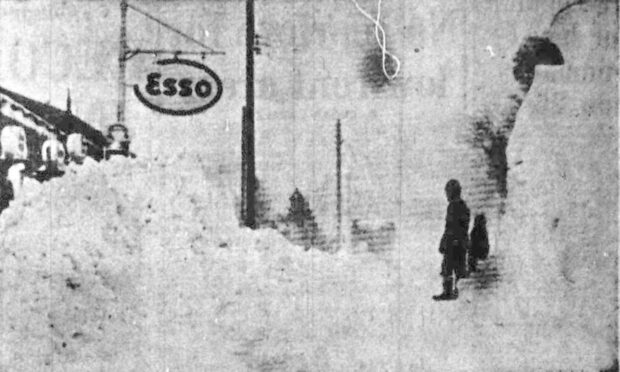
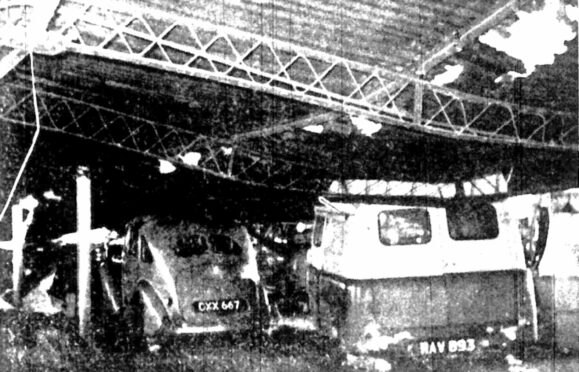
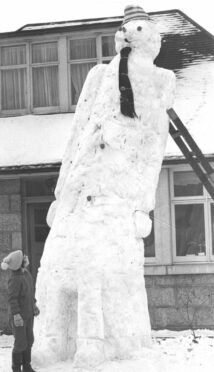
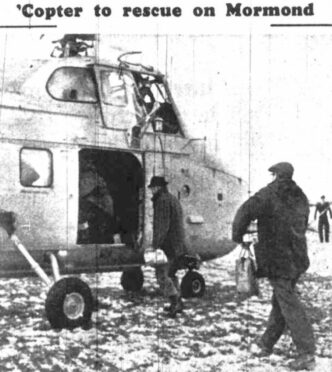
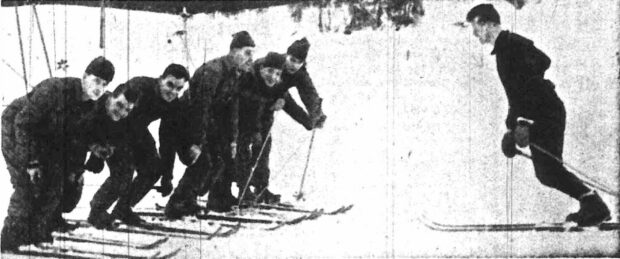
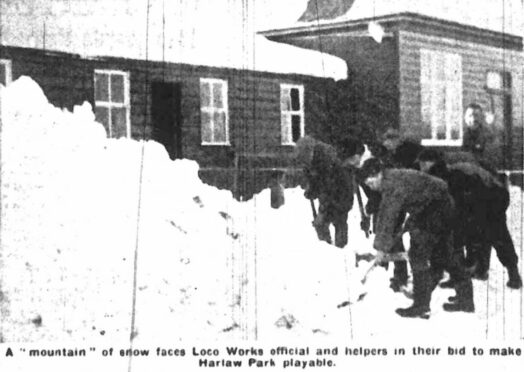
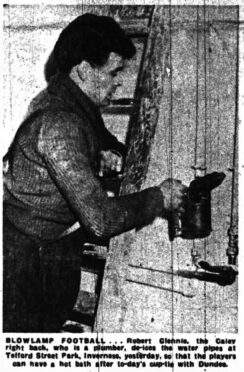
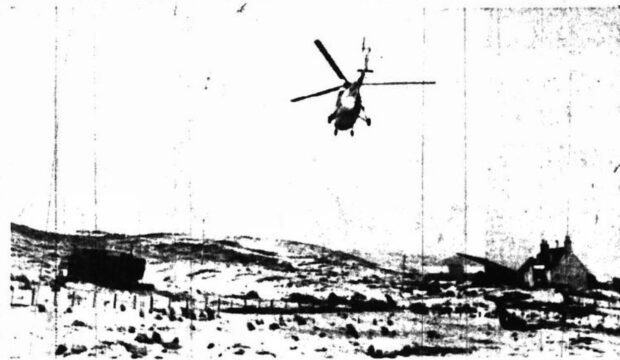
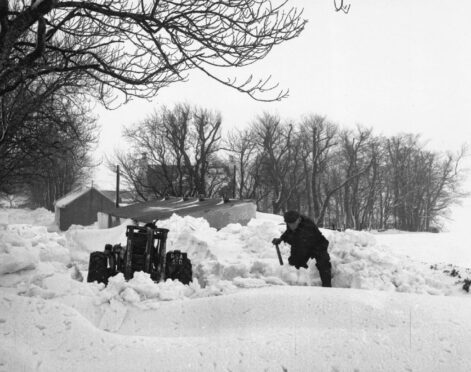
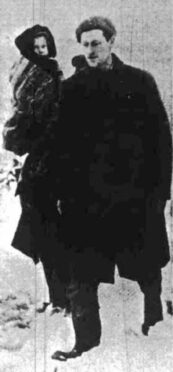
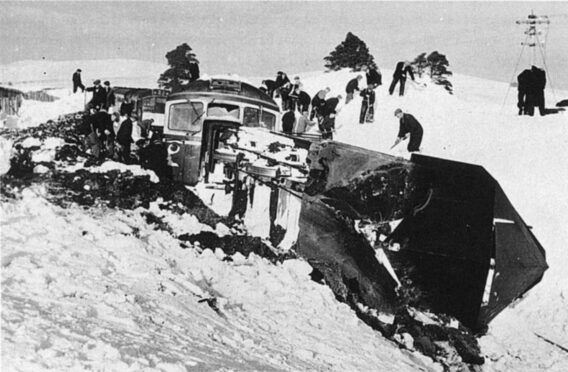
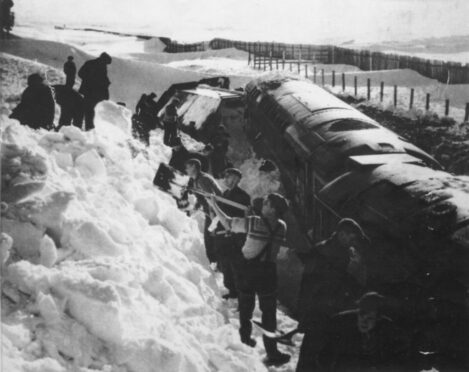
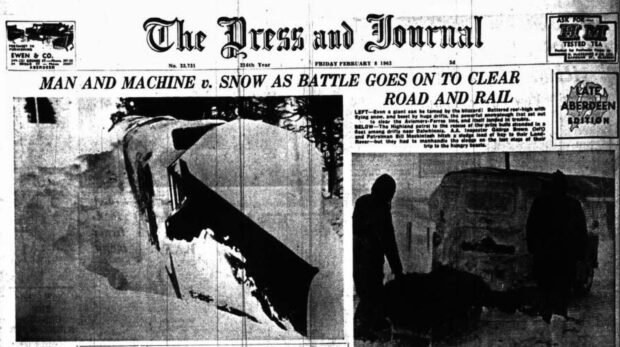
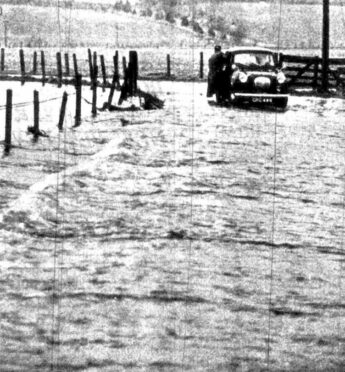
Conversation